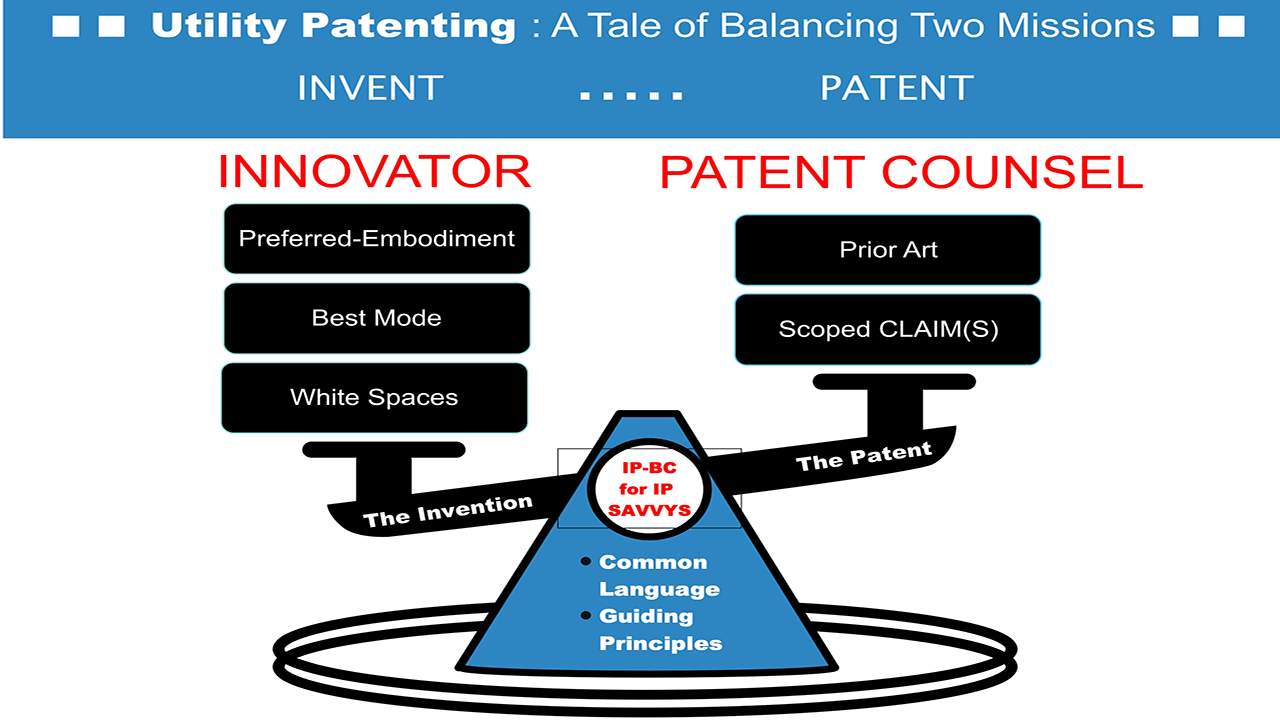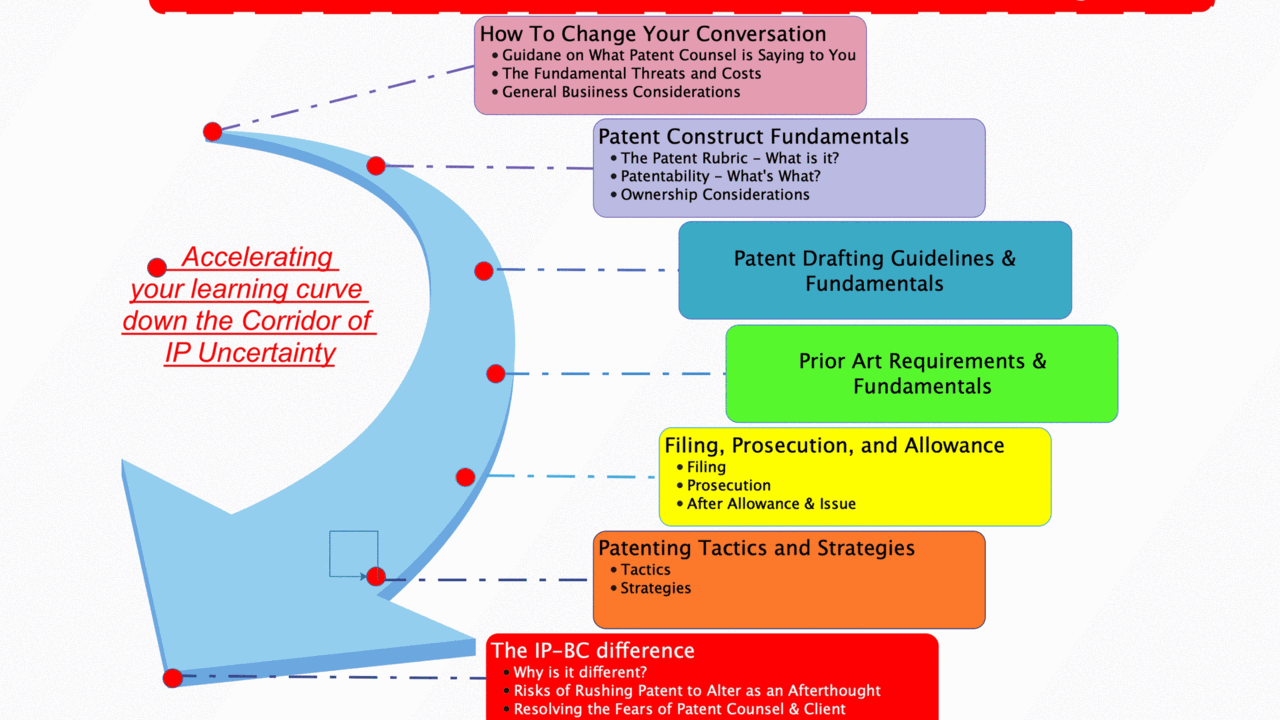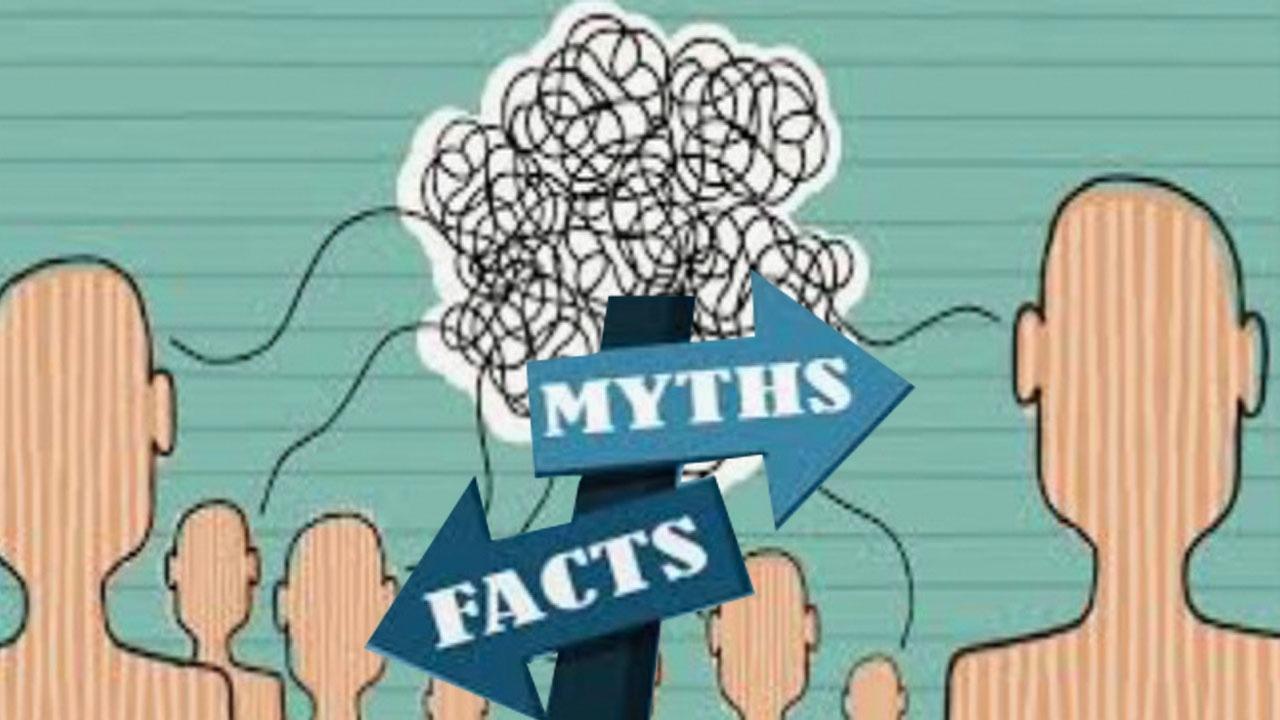IP SAVVYS Blog - select posts by role/title or by category
Common Misconceptions 3: Only the Shaman Patent Counsel can and should write the first claim...or Schwartz's ABC rule

Yes and NO (I repeat NO NO NO :)). Why am I saying this and what do I really mean? What is the Schwartz ABC rule? (explained shortly-it stands for Always Be Claiming).
The yes part is important to state up front. When you file your patent application, my guidance is that the timely completed draft application along with a review and editing of the independent claims be done by a competent patent counsel in your field of art (if they haven't already engaged in a lot more of the crafting/drafting work by that time). In other words, if you engage patent counsel early or alternatively later on... deferring by creating IDPAW entries in preparation for a utility compliant patent application invention disclosure to counsel, you will want to have their claim language and grammar editing (hahaha but seriously even though each claim is a run-on sentence, it has a semantic format that is nuanced by MPEP rules), before filing.
Then why do I admonish NONONO? In the Intellectual Property BoostCam...
Original Misconceptions: 2. Hand over an Invention Disclosure instead of a Schwartz Method Utility Compliant Disclosure (UCD)

When engaging outside counsel to assist you in the process of preparing and filing a patent, you will always be asked to submit an invention disclosure document as part of the work flow. Often, you will be asked for this "early" as possible in the counsel's project plan since this is the basis for the drafting of a preliminary patent application. The invention disclosure will elicit an array of content components starting with the title of your invention, the inventors, the background and field of art, and so forth. It all seems perfectly logical...how can you ask counsel to work on a patent draft if you don't give them "the goods".
That said, it is a common misconception that you MUST give them the invention disclosure EARLY. In fact, if you have a proper internal utility patenting workflow, not only will you be keeping your invention as a trade secret until the time you choose, but you will also be developing an internal form of invention disclosure as part of your product develop...
Myth #1-Common Misconceptions about IP Capitalization

Is it possible that people so smart they are seeking Intellectual Property protection, could have even the inkling of a misconception about getting the right kind of protection?
Of course it is...because it's complicated. This is the perfect use case for "what's easy is hard, and what's hard can be easier". It's easy to say we're getting Ip protection but we know that is very challenging at the least. So if it's really hard, it can be easier with 20/20 hindsight and 80 more IP-IQ points...if you have some clarifications and guidance from a trustworthy source.
Welcome to this category and the posts here will seek to identify what you know and don't know, and what you don't know you don't know.
Slippery Slope or NOT?: IP Complexity, Competence, and Execution

The rules for getting utility patents are complex and the execution of patent preparation, filing, prosecution, and use rights is a daunting task-akin to walking a slippery slope. Why? When you get into this game, can you act as a "player-coach" and both lead and show by example what and how to do it? It all begins with “changing the IP conversation “ by “knowing how the legal systems rules" (Manual for Patent Application Procedures-MPEP) work.
At the outset it is a slippery slope with this part of the execution plan...i.e. you have something you want to protect and there is an execution sequence to achieve it, within the legal framework, along with patent lawyers who run the rule book in real time.
We believe strongly that every IP-Champion, be it the CEO or one of the senior executives in product development, can and should be a “referee/player coach” in the game . . . knowing not only the rules but also the "stories" about how they play out, so s/he can both lead and show.
...Since we're First-To-File, my invention notebook and my date of conception don't matter now

Wrong :) You know that they still matter since your invention notebook is your iterative innovation tool. Yes, at one time, when we were First-To-Invent (FTI), it's role documenting your initial conception, played a more critical role in establishing patent priority and monopoly rights. Even with the new AIA First-To-File (FTF), date of conception can still play a role in certain circumstances, especially during infringement battles that might result in an injunction or the payment of forced royalties. But that's not my point here. The importance of Schwartz's Big-Bang-Theory of IP Capitalization and the factoring of The Schwartz Method (TSM) into Product Lifecycle Management (PLM) has a more fundamental role.
Achieving FTF on a true Preferred-Embodiment (P-E) is a matter of integrating patent preparation into every nook and cranny of the product development road map. The days when the luxury of filing unfocused provisionals and drafting the patent on the P-E as an afterthought, are ...
Original Misconceptions: 1. Picket Fence

Right off, when you create a "Picket Fence" you can expand your monopoly. OK, sure that's the ticket. Getting the picket fence, well that's where the misconceptions can creep in.
If you think you can do it in one master stroke, with a bible patent that covers all the Preferred Embodiments of your invention, it may prove to be a walk into the tulip patches.
First, if your application has MORE THAN ONE INVENTION in it, and your preferred embodiment passes all the rules for allowance, then at the time of publishing, they are going to MAKE you pick an invention. A patent can only cover one invention. So if the set of P-E's can be seen as different inventions (per your CLAIM sets), then you will have to divide at the time of publishing in order to keep "the others".
If you go this route, then the "20 year" time clock starts clicking on all the embodiments, and they will all be shown as well. Further, if there is any reason that the first patent "falls", the risk of the rest falling is hi...
Do I wait to GOTO market until my patent Issues?

BBT shares a set of events that lock-step toward the blessed Notice of Allowance for a patent on one of your chosen inventions. It is the primary theme of IP-BC and is used to establish all the course lessons and tools you can put to best practice use.
The sequence of events you will engage in to file an airtight patent application, de-risked from FOARs will take a natural course IF YOU STAY FOCUSED on identifying and prototyping the P-E, along with drafting layman claims for the object of enablement that quiesces to BEST MODE with the minimum number of "elements".
So while that's going on in R&D and Product Marketing, on the other side of T=0 (MARKET ENTRY), Business Development/Sales is making moves to establish the commercial value of what you have been in the process of protecting.
MISCONCEPTION: we must wait till the patent issues before selling it in the marketplace.
In this first-to-file world, and with the acceleration of innovation, the iterative nature of patenting and s...

